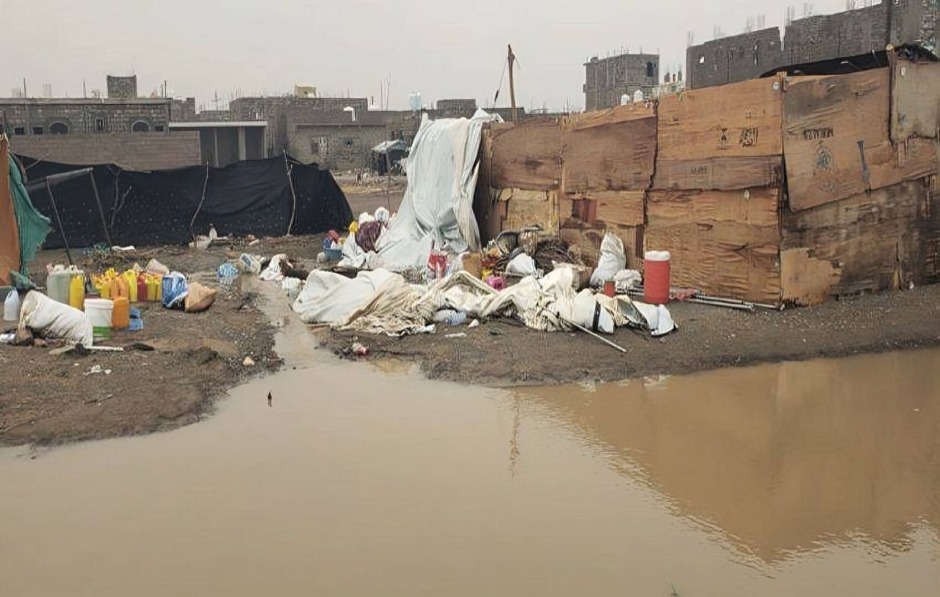
Barran Press
The number of people affected by floods and heavy rainfall in Yemen last week has risen to 180,000, according to a United Nations report released on Saturday, August 17th, 2024. The report also predicts that the severe weather conditions will continue through September.
The figure, which is double the number reported last week, reflects the impact of "exceptionally heavy seasonal rains," according to the report by the United Nations Population Fund (UNFPA). The report states that these rains have caused significant damage and displacement in numerous Yemeni regions, further exacerbating the already dire humanitarian situation stemming from over nine years of conflict.
The UN report highlights the hardest-hit governorates, including Hodeidah, Hajjah, Marib, Sa'ada, and Taiz. Local authorities and humanitarian partners estimate that approximately 180,000 people have been affected by the floods.
The report emphasizes the disproportionate impact on women, particularly displaced families headed by women, who make up over 20% of those receiving emergency aid.
The report outlines the urgent needs of those affected, including emergency relief supplies, shelter, multi-purpose cash assistance, food and non-food items, water and sanitation, clothing, civilian protection, and medical supplies to ensure continued care and support for health facilities and supplies.
The UN report details the organization's response, stating that "within 24 to 72 hours of the displacement warning, the UN's multi-sector rapid response mechanism, led by UNFPA, was activated in the affected areas to provide emergency assistance to displaced and flood-affected families."
The report indicates that the rapid response mechanism teams have been able to assist 80,000 individuals and anticipate that the severe weather conditions will persist until September.
The report further states that the Food and Agriculture Organization's (FAO) Agricultural Meteorological Early Warning System and the UK Met Office issued a new warning indicating that Ibb Governorate (193 kilometers south of Sana'a) could receive over 300 millimeters of rainfall over the next ten days. Heavy rainfall is expected in the central and southern highlands, with a heightened risk of flooding.
The report also mentions that the Yemeni National Center for Meteorology and Early Warning has reported that Sana'a has experienced the highest rainfall in the past two days. The center predicts continued intermittent heavy thundershowers in several governorates.
According to the UN report, the floods in Hodeidah Governorate (western Yemen) have affected 20 districts. The report states that the most severely affected areas include Al-Mraweh, Al-Zaydiyah, Beit Al-Faqih, Al-Lihya, Al-Qanaws, Zabid, Al-Hook, and Al-Durihmi. The rapid response mechanism has received reports of 56,119 affected individuals in the governorate.
The report also mentions that Hajjah Governorate (northwest Yemen) has experienced significant flooding, with widespread damage reported in 13 districts, particularly in Abs, Hajjah city, Mustaba, Qafl Shamr, Khyran-Al-Mahraq, Bani Qais, and Kuedinah. Abs district has been identified as one of the areas most severely affected by recent floods. The rapid response mechanism has registered 26,046 affected individuals in the district.
The report states that health facilities in Hodeidah have been affected by floods in the Bajil, Al-Zahra, Al-Zaydiyah, and Al-Mraweh districts, including the Al-Thawra Hospital. The health cluster has reported an urgent need for fuel to ensure continued care, particularly at the Al-Thawra referral hospital.
According to the report, widespread flooding has occurred in Al-Mahwit Governorate, particularly in Bani Saad district, where several homes have been damaged or destroyed. Some infrastructure, including roads and bridges, has also been damaged, hindering access to many affected communities.
The report states that the floods have inundated agricultural lands, causing significant losses to crops and livestock. Over 7,000 families in Marib Governorate have been affected in 41 camps and displacement sites.





